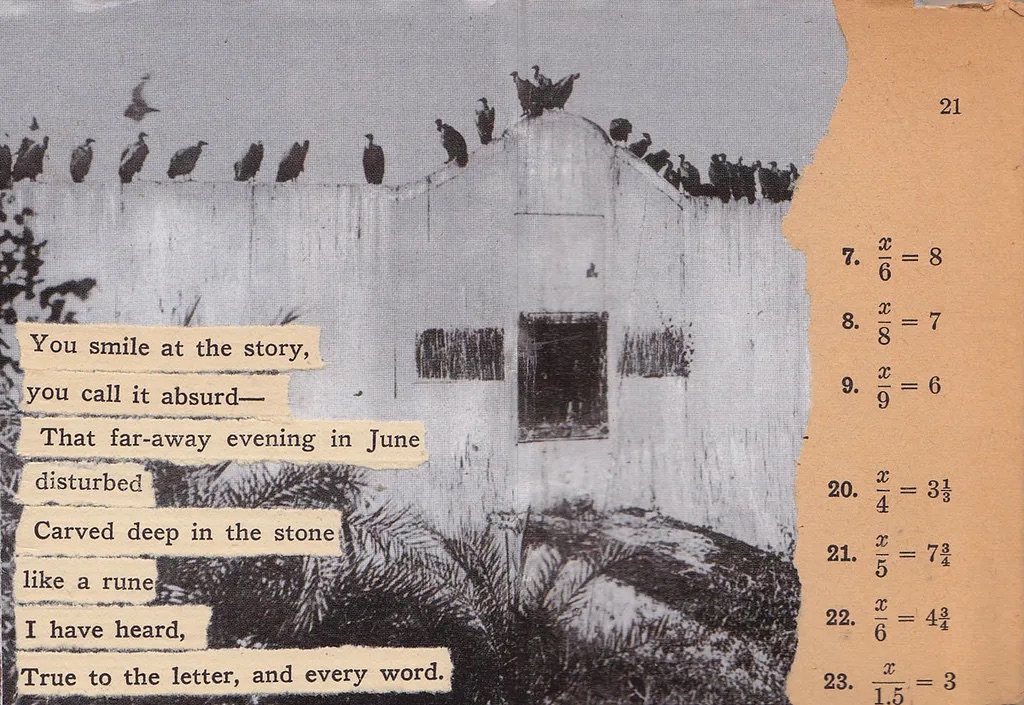Summary:
Learn about Found Poetry, a type of poetry created by taking words, phrases, and sometimes whole passages from other sources and reframing them by making changes in spacing and lines, or by adding or deleting text. Originally published on April 6, 2020
Many people talk about imagining a story world when they read, often saying things like “I can see that scene so clearly.” I, however, have always been a person who reads with my ears. I can hear a character’s voice and cadence, I stop to re-read sentences out loud just to hear them, and though many people don’t believe me, I’m so impacted by the sound of written language, that I often dream in the same syntax of the book I am reading.
So maybe I’m particularly susceptible to the idea that “poetry is all around us.” For me, it’s not just the sound and arrangement of language in books, but the sound of language on BART, in restaurants, in line at the grocery store. And, of course, the endless possibilities that the print world offers us to seek, find and distill language to it’s richest, densest form or to hone it to its sharpest point.
Poetry all around us waiting to be found
Found poetry is a type of poetry created by taking words, phrases, and sometimes whole passages from other sources and reframing them (a literary equivalent of a collage) by making changes in spacing and lines, or by adding or deleting text, thus imparting new meaning. The art of creating found poetry has been celebrated by many amazing writers. Annie Dillard, for instance, compares the process of writing found poetry to that of making sculptures from trash: “those happy poets who write found poetry go pawing through popular culture like sculptors on trash heaps. They hold and wave aloft usable artifacts and fragments; jingles and ad copy, menus and broadcasts — ” Indeed, those who make found poetry seem to agree that poetry really is “all around us.”
Why would anyone make found poems? NWP Writers Council member Shirley McPhillips writes of the art of found poetry “. . . finding lines and crafting these types of poems can be liberating and fun. When feeling strapped for an idea, or stuck on a poem of your own, we can take a break and use someone else’s words and still feel creative as we try to arrange and order them to represent some kind of new truth. We can still practice the craft of making a poem and yield something honest, artful, even moving.”
This Week’s Poetry Challenge
This week, our shared poetry challenge is to find some poems. Maybe you want to start by examining the language of everyday objects around your house. Do you start your day by staring blindly at the cereal box in front of you? Why not see if there’s a poem trapped among the words on there? Junk mail? Trader Joe’s Flyer? The Daily News? Maybe there’s a poem in there.
Later this week, we’ll provide examples and instructions for blackout and bookspine poetry, but you might also want to try your hand at a Cento. And if you need inspiration, you could always read back issues of the Found Poetry Review.

